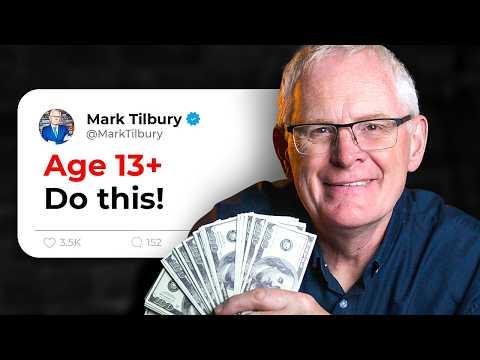Investing as a teenager can feel like an overwhelming task, but it’s an opportunity that can set the stage for financial success in the future. My own journey into the world of investing began quite unexpectedly, and it’s a story that many teenagers might find relatable.
I was fifteen when I first heard about investing. It wasn’t during a formal class or from a financial advisor, but rather from an offhand comment made by my older cousin during a family gathering. He casually mentioned how he had bought stocks in a company and was already seeing returns. The idea intrigued me, but at that point, I had only a basic understanding of what stocks were, let alone how to invest in them.
Initially, I was daunted by the complexity of investing. The financial jargon seemed like a foreign language, and I had no idea where to begin. To make matters more challenging, I was still in high school, juggling homework, extracurricular activities, and a part-time job. It seemed like an impossible task to find the time and resources to dive into investing.
However, I decided that if I wanted to truly understand investing, I needed to start learning. My first step was to educate myself. I began by reading articles online, watching YouTube videos, and borrowing books from the library about investing. I discovered that investing wasn’t just about buying and selling stocks; it was about making informed decisions and planning for the future.
One of the most valuable resources I found was a book titled “The Intelligent Investor” by Benjamin Graham. Although it was a bit dense for a teenager, it provided a solid foundation in the principles of investing. I also found several online platforms offering free courses on investing basics, which were incredibly helpful in simplifying the concepts.
After gaining some basic knowledge, the next challenge was to find a way to start investing with limited funds. I knew that I didn’t have a lot of money to invest, but I was determined to start small. I explored different investment options and came across the concept of fractional shares. This was a game-changer for me. Fractional shares allowed me to invest in high-value stocks with a smaller amount of money, making it possible to diversify my investments even with a modest budget.
I also learned about the importance of setting financial goals. Whether it was saving for college, a future car, or simply building a financial cushion, having clear goals helped me stay motivated. I set a goal to save and invest a small portion of my part-time job earnings each month. It wasn’t a huge amount, but it was a start.
One of the first investments I made was in a low-cost index fund. Index funds are a type of mutual fund that tracks a market index, such as the S&P 500. They offer diversification and have lower fees compared to actively managed funds. For someone just starting out, they seemed like a relatively safe and straightforward option.
To make the process easier, I used an app designed for beginner investors. Many of these apps offer features tailored to teenagers, such as educational resources and easy-to-understand interfaces. They also often have low minimum investment requirements, making them accessible for someone with a limited budget.
As I continued to invest, I kept track of my progress and regularly reviewed my investments. I learned the importance of being patient and not getting discouraged by short-term market fluctuations. Investing is a long-term game, and the key is to stay informed and stick to your strategy.
Another important lesson I learned was the value of diversification. I made sure to spread my investments across different asset classes, such as stocks, bonds, and real estate. Diversification helps to manage risk and can lead to more stable returns over time.
Over time, I also started exploring other investment options, such as bonds and real estate investment trusts (REITs). Bonds are a form of debt investment where you lend money to a company or government in exchange for periodic interest payments. REITs allow you to invest in real estate without having to buy physical property.
Through this journey, I discovered the significance of continuous learning. The financial world is constantly evolving, and staying informed about new investment opportunities and strategies is crucial. I subscribed to financial newsletters, followed market news, and joined online forums to stay up-to-date.
One of the most rewarding aspects of this journey was seeing the growth of my investments over time. Although the returns were modest at first, the experience taught me the value of persistence and disciplined investing. I realized that investing wasn’t just about making money; it was about building a foundation for future financial stability and achieving my goals.
Investing as a teenager may seem daunting, but it’s an experience that can provide valuable lessons and set the stage for future financial success. By starting with education, setting clear goals, and making informed decisions, I was able to navigate the world of investing and build a solid foundation for my financial future. If you’re a teenager considering investing, remember that it’s never too early to start, and even small steps can lead to significant growth over time.
